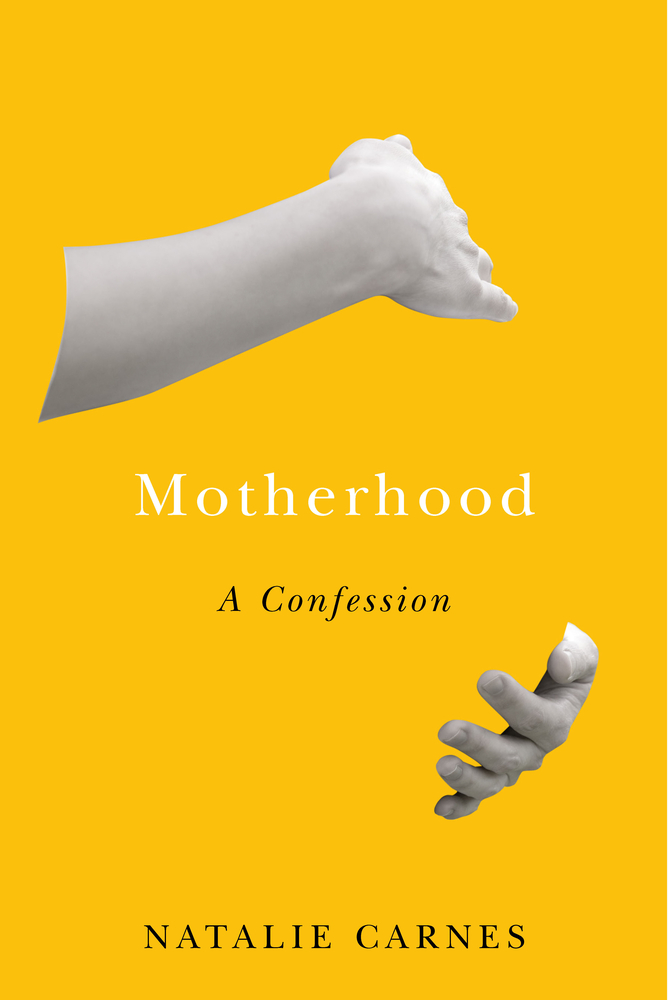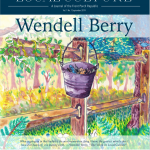Waco, TX. Janet Martin Soskice begins The Kindness of God: Metaphor, Gender, and Religious Language (2007) by drawing attention to the similarities between the rational philosopher and the spiritual ascetic. Critiquing how strains of Christianity have embraced a disembodied spirituality that resembles Cartesian dualism, Soskice reminds us that “the body, no less than the soul, is the place where God acts” (28). Otherwise, what happens to those doing daily tasks? Those living out their lives in a world defined by interruption? They are, spiritually, left behind. Soskice is not satisfied with that picture, demanding that we allow “our physical natures into the picture of the spiritual life as a good, indeed a necessity” (29). Soskice declares, “What we want is a monk who finds God while cooking a meal with one child clamouring for a drink, another who needs a bottom wiped, and a baby throwing up over his shoulder” (23).
We might think of Natalie Carnes’s recently published work, Motherhood: A Confession (Stanford, 2020), as providing us with an image of the monk Soskice describes. Written in the style of St. Augustine’s Confessions, Carnes’s work illustrates a soul’s journey toward God that happens through the interruption of a child, not in spite of it. In the introduction, Carnes notes the absence of women and children from “talk about divinity and humanity” (3). She wonders aloud, “But what if their lives were taken as significant sites for theological work?” (3). Motherhood is the incarnation of this question.
For Carnes, this book follows Image and Presence (Stanford, 2017) and Beauty: A Theological Engagement with Gregory of Nyssa (Cascade Books, 2014). In “The Saint and I: On Augustine and Writing About Mothers,” Carnes describes just how vastly different this project is from her other works. It comes out of a professional and personal engagement with St. Augustine’s Confessions. Carnes explains, “As he worries about women and their bodies, Augustine describes God with masculinist imagery and portrays men as more fully human than women. And still I found the Confessions a beautiful book, at times astonishingly insightful about friendship, suffering, temptation, domination, and conversion.” She honestly asks, “What should I do with a book like this? Leave it alone? Critique it?”
Carnes allows herself to become vulnerable to the text, working within what she describes as “Eve Kosofsky Sedgwick’s descriptions of reparative reading, an echo of Paul Ricoeur’s restorative reading.” The fruit of this rigorous engagement is the rich dialogue that we receive—one where, Carnes writes, “I repair the text; the text repairs me.” Carnes’s work joins contemporary voices who refuse to “cancel texts” but simultaneously refuse to withhold judgment; she is doing the invaluable “both/and” work that Rita Felski calls for in Literature After Feminism. Because she is not afraid to be formed by this text and to inform it, she provides a model for a more difficult, more just way forward—one that listens with gratitude, critiques boldly, and expands the voices and perspectives within our on-going and never-ending conversations about the world, ourselves, and God.
Motherhood is composed of vivid images from Carnes’s life as a mother—from the difficulties of breastfeeding to the anticipation of her daughter’s first communion—moving imperceptibly between fact, fiction, and reflection in a way that only a memoir, only a confession, can. The organization of the book echoes the thirteen-chapter structure of the Confessions, but with one striking difference: for the first ten chapters, the speaker is not addressing God but rather her daughter. This reorientation turns our gaze to a life event not usually dwelled on in academic, theological writing: the relationship of a mother and child. On the page, she breathes in and out the difficult world of embodied spirituality, taking us with her as she finds God in new and beautiful ways through this relationship. As she participates in the becoming of her child, she herself is becoming. And we, the readers, are invited to join this journey alongside them. Carnes’s vulnerability challenges us to embody our ideas, remember how to play and worship, and live joyfully in the unresolved “twoness” of everyday life.
In the fourth chapter, “Suffering,” the speaker wonders how she will teach her child about injustice. How do you tell your child about your own town’s dark history? In Waco, Texas—the academic home to both Carnes and myself—the lynching of Jesse Washington in 1916 still haunts a town now known for its university and abundance of shiplap. She describes attending a march with her daughter, as she attempts to physically involve her in the suffering of others: “I ask you what you like most about the march—the clever signs we saw, the big, buzzy energy all around us, the way people can come together to make change? You liked the older woman giving out cupcakes to marchers in celebration of her birthday” (68). Of course, the speaker remarks, “cupcakes are so concrete and delicious, while the commitments motivating the march are remote to you” (68).
Carnes’s anecdote is haunting. What does it mean to learn without embodiment? In “Word and Flesh,” Wendell Berry calls for us to incarnate our love for the abstracted idea of “the planet” into love for our individual neighborhoods, quoting Shakespeare’s Orlando: “I can live no longer by thinking.” But loving a specific neighborhood or person or church is much more difficult and much messier than hoping to “change the world.” To learn about these particulars, to love them, will cause suffering. All too aware of this, Carnes resolves: “My love wants to protect you from suffering, but my love means I must learn to let you suffer” (69). In our current moment of social media activism, we must ask ourselves what kind of learning, real learning—the kind that involves your body and takes root in your soul—can take place without embodiment? And what kind of real embodiment takes place without participating in the grief and suffering of another? Carnes’s role as a mother forces her to grapple with these questions in a way that is not required of the pure intellectual—in a way, sadly, that is not always required of teachers. In this chapter, Carnes challenges our intellectualized commitments and requires that we consider how they might and should incarnate into our particular workplaces, families, and communities.
And while she learns how to teach her child, the child, in return, teaches her. The chapter on “Desire” stands out in the text, as Carnes weaves the theme of play throughout this reflection. She thinks about how difficult it is to submit to the rhythms of a child—an adult’s sense of time offended by the monotony. It is challenging, she writes, because “I am already colonized by the logics of materialism, functionalism, and capitalism, and because opening myself to another way of being is painful” (84). Everything about play stands in opposition to our “isms” and offends our modern rhythms of time, which are ordered by google calendars, iPhones, and boundaries that make these lives possible, even if not necessarily sustainable.
Reflecting on the theory of Maria Montessori, Carnes writes, “Your play is not ordered toward an external goal; it is ordered toward your becoming” (82). The formative work of a child’s play challenges us to remember the goods in our own lives, which are not, or ought not to be, ordered toward an external goal. Carnes recalls when her own academic work “was once an end in itself, part of my self’s becoming” (83). Reflecting on Romano Guardini and Johan Huizinga, she draws attention to a practice that, at its very heart, should not have an external goal: worship. We can easily see that we need to rescue our work and worship and relationships from numbing utilitarianism, but how? For Carnes, it is the child who breaks through again and again on her own routinized existence and disrupts a mechanistic way of thinking that is, ultimately, antagonistic to the speaker’s own desires.
Carnes is honest about the kind of “twoness” or “rivenness” that her roles as a scholar and mother give her, and she never neatly resolves this tension. The honesty of this rivenness is, perhaps, the great confession of the work: “I am called to a twoness that never dissolves and desires that frequently do” (83). In one of the work’s most stunning passages, she writes,
There is no voice that can heal me from my rivenness, but your joy, your goofiness, your delight at your own antics, embolden a shy desire. “Come and play!” I remember the child’s voice in Augustine and take yours as divine command. Shutting my computer, I swoop you into a hug, dipping you upside down as you break into surprised giggles, exclaiming, ‘Spin me Mommy!’ I’m giggling now, too. You wiggle to the floor and catch my hand, and the two of us twirl around the room swinging, hopping, twisting, and dancing with silliness to make even King David blush. (85)
With the same boldness that allows her to challenge convention, Carnes also disregards fear of the sentimentalized mother trope and is honest about her joy. Her child doesn’t bar her from desire, even while expanding her work and responsibilities, but rather shows her a way to live into her desires.
Dancing around the living room, the speaker finds herself in a joy only the body can bring—a beauty made stark in the incarnation. In the final three chapters, the speaker moves from addressing the child to addressing God. She reflects on Paul Blower’s translation of Maximus, saying,
The words stay with me, sinking into my imagination of who You are—the mystery of Your embodiment. The phrase describes Your incarnation as a human, not as an afterthought to Your identity as God, like a garment You learned to put on for a time, but as revealing something deep about You, about who You eternally are. (171)
This world of the body, of child-bearing, of meals, of play, of relationships, of sickness, and of injustice is not a garment. It is a part of the very fabric of the Godhead; this means that “Creation is part of this mysterious embodiment-seeking of You” (171). The world of our bodies, then, this world—even our rivenness, our twoness—is a part of the embodied work of seeing Christ, a revelation of a new logic that allows us to live more richly and more deeply into our daily lives.
Paying attention to these small, often mundane details proves a rich reflection on reality—not simply for mothers but for every person who lives in relationships (spoiler alert: that’s every living, breathing human being). As we learn from the logic of the child, the logic of the mother, we find in them the logic of Christ. In this way, Motherhood speaks into the deepest questions of incarnational life and what it means to live into our callings mediated through our desires and our commitments. None of us are immune to the rivenness of daily life, or at least we shouldn’t be. Our lives should be divided by commitments that are both our duty and our joy. These commitments do not simply alienate us from the self but shape the self. Without these commitments, would we have more liberty? Of course. But at what cost? Perhaps, at the cost of a kingdom we cannot enter unless we learn the logic of the child.
Janet Martin Soskice writes, “Attention is rewarded with reality” (27). In Motherhood: A Confession, Carnes pays attention to the life and breath and movements of a child and her role as a mother entrusted with the care of this human person—and her readers are gifted with a fuller picture of the world we live in, one fraught with disembodiment and too many commitments. But within these pages, we are also called to play. We are called to become. We are called to attend to the God who can be known in the flesh, in the mundane, and, especially, in the interruptions of a child.









1 comment
Jessie
Love this, Christina!
Comments are closed.